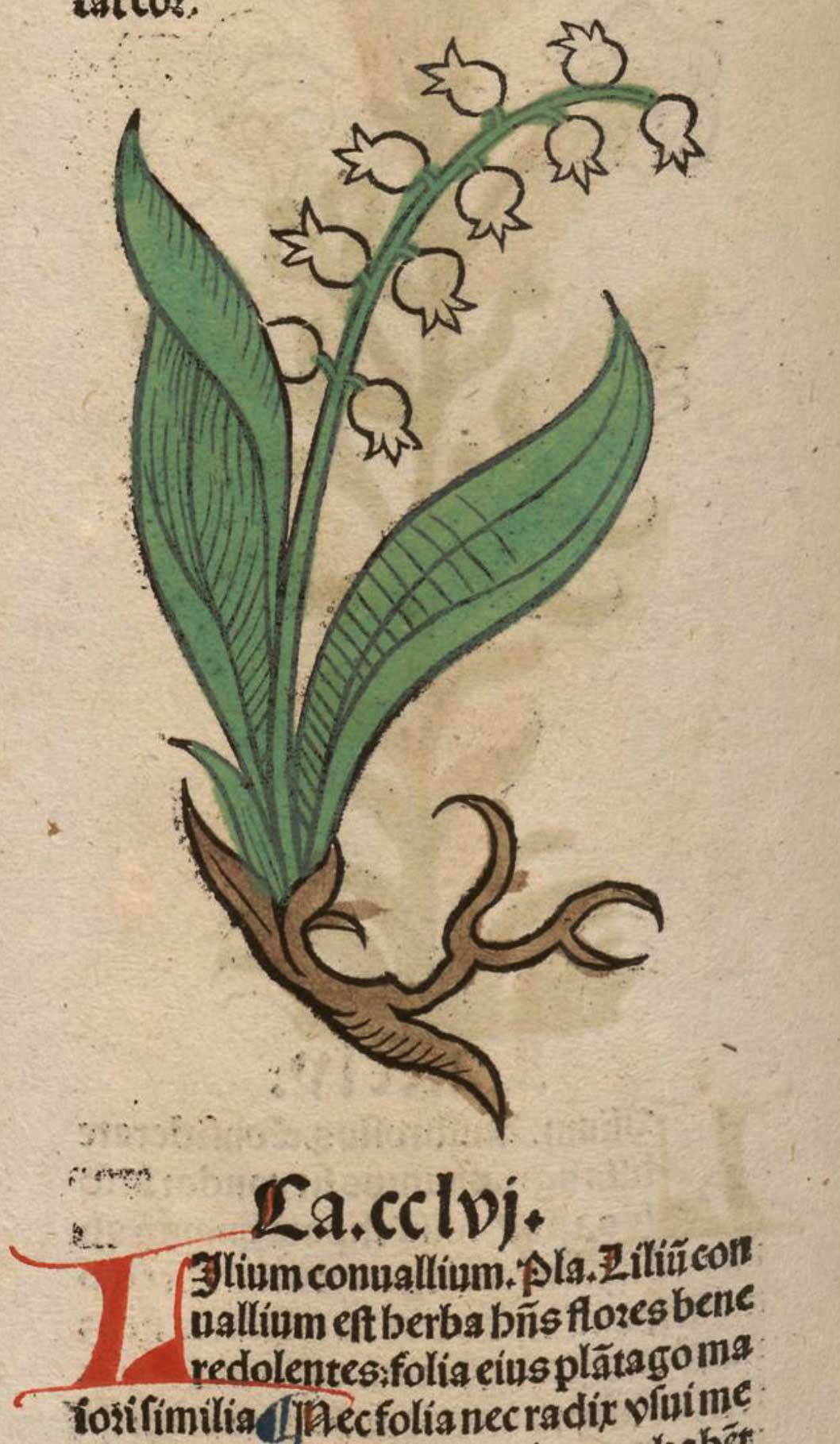Among plants named by metamorphosis of men or women.
Notes
Lilium
saphran
How you also, Celmis, now adamant, were once most faithful friend of little Jove; how the Curetes sprang from copious showers; how Crocus and his beloved Smilax were changed into tiny flowers. All these stories I will pass by and will charm your minds with a tale that is pleasing because new.
Smilax
Similis est hederae e Cilicia quidem primum profecta sed in Graecia frequentior quam vocant smilacem, densis geniculata caulibus, spinosis frutectosa ramis, folio hederaceo, parvo, non anguloso, a pediculo emittente pampinos, flore candido, olente lilium. fert racemos labruscae modo, non hederae, colore rubro, conplexa acinis maioribus nucleos ternos, minoribus singulos, nigros durosque, infausta omnibus sacris et coronis, quoniam sit lugubris virgine eius nominis propter amorem iuvenis Croci mutata in hunc fruticem. id volgus ignorans plerumque festa sua polluit hederam existimando, sicut in poetis aut Libero patre aut Sileno, quis omnino scit1 quibus coronentur?
E smilace fiunt codicilli; propriumque materia est ut admota auribus lenem sonum reddat. hederae mira proditur natura ad experienda vina, si vas fiat e ligno eius, vina transfluere ac remanere aquam si qua fuerit mixta.
Resembling ivy is the plant called smilax [A species of bind-weed] which first came from Cilicia, but is now more common in Greece; it has thick jointed stalks and thorny branches that make it a kind of shrub; the leaf resembles that of the ivy, but is small and has no corners, and throws out tendrils from its stalk; the flower is white and has the scent of a lily. It bears clusters of berries like those of the wild vine, not of the ivy; they are red in colour, and the larger ones enclose three hard black stones but the smaller a single stone. This plant is unlucky to use at all sacred rites and for wreaths, because it has a mournful association, a maiden named Smilax having been turned into a smilax shrub because of her love for a youth named Crocus. The common people not knowing this usually pollute their festivals with it because they think that it is ivy; just as in the case of the poets or Father Liber or Silenus, who wear wreaths made of who in the world knows what?
Smilax is used for making tablets; it is a peculiarity of this wood to give out a slight sound when placed to one’s ear. It is said that ivy has a remarkable property [Cato R.R. CXI] for testing wines, inasmuch as a vessel made of its wood allows wine to pass through it, water that has been mixed with the wine stops in the vessel.
Smilax
Smilax
Pliny xvi. 35, § 63.
Smilax
Smilax, jeune fille qui fut, selon la fable, changée en plante avec son amant Crocus.
Et Crocon in parvos versum cum Smilace flores prætereo…
Ovide, Mét. IV 283-284
Smilax aspera L., Salsepareille d’Europe, Asparaginée grimpante de la France méridionale. (Paul Delaunay)
crocus
thus Crocus, a lovesick suitor, and smilax, after the maid he pined for…
Smilax
Pour smilax (crocus) voir Textor, Officina, d’apres Ovide, Metam, IV 283.
Smilax
Changée en plante grimpante en même temps que son amant Crocus.
smilax
smilax. [adopted from Latin smi¯lax (Pliny), adopted from Greek smilac bindweed, etc.]
A large genus of liliaceous plants typical of the order Smilaceæ, or a species of this genus, the tuberous rootstocks of which constitute the sarsaparilla of commerce. In earlier writers, as Morwyng (1559) and Turner (1562), smilax is used in other senses of the Latin and Greek word, after passages in Pliny or Dioscorides.
1601 Philemon Holland, translator Pliny’s History of the world, commonly called the Natural historie II. 190 Some haue said that Smilax is of 2 sorts: the one… climbing trees, & tufted in the head with clusters… of berries.
C. 1610 Fairfax Eclogues iv. xv, Bay, Smilax, Myrtle… Grew there.
1671 William Salmon Synopsis medicinæ iii. xxii. 432 Smilax,… Bindweed; it opens the belly, dissolves hard swellings.
1710 W. King Heathen Gods & Heroes xxvii. (1722) 134 The Ivy, the Smilax, or Ropeweed,… were the Vegetables that he [Bacchus] delighted in.
